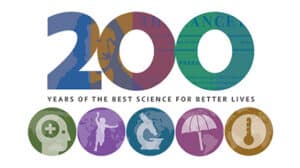Terms using of ads and boosted content to promote health information on internet platforms as problematic
Access to accurate health information cannot be achieved through boosted content, according to a top World Health Organisation official.
“If we want to achieve true resilience of individuals and communities to misinformation, we need to ensure that they all receive credible and accurate health information in ways they can understand and use it,” Tina D Purnat, Team Lead for Infodemic Management at the Division for Emergency Preparedness, WHO wrote in an article on Linkedin on Tuesday.
She said that as for as she knows no one has been able to link social media ads to an increase in vaccine uptake, arguing that the boosted content is usually geared toward a specific audience that the marketer is trying to reach.
“Ads to promote campaigns inherently run for only certain segments of populations and not everyone. This can leave people and communities out of the digital efforts to promote acceptable, relevant and credible content dissemination online,” Purnat said.
“While relying on ads to boost content may make sense for purposes of marketing, this cannot be the dominant strategy for health information dissemination in the digital spaces,” she added.
Citing example of Crowdtangle that does not include information about what boosted content on a specific topic is served to a particular audience, she said “this basically means that what little public data is available on what is being discussed and shared about a given topic is utterly missing information on what content has been boosted – and this content actually most likely has the farthest reach and engagement, and therefore can influence the dynamics of the larger conversation.”
“The difference between a company using social media ads for marketing and a public health authority is that the company wants to sell you a product which is why they want you to click and shop. Their ultimate metric is number of sales generated. For a health authority, it may be a click-through to a web page with more health information, or to book a vaccine appointment,” Purnat said.
However, she added, during the pandemic, platforms voluntarily promoted content about COVID-19 resources and information from government websites.
When a user was searching for or reading COVID-19 content on a platform, they would be offered links to sources of health information in their country.
“This was a powerful way to channel users to health authority websites, but it’s unclear how well the health authority websites were segmented and answered specific questions and concerns that were circulating. For example, Google posted help pages for how to prepare government web sites to serve up-to-date COVID-19 content to the search engine. It would be useful to know how many government websites took the recommendations into consideration,” she said.
Purnat pointed out there was overwhelming evidence to know that exposure to health information did not easily translate into health behaviors.
“So how can one effectively research that link? Thinking like marketing professionals won’t get us closer to improving the routine datasets or methods to measure essential indicators needed to inform infodemic management. Thinking like epidemiologists will,” she said.
Purnat cited a project in which the WHO infodemic management team has been working with the University of Sydney on information exposure measurement tools that focus on harmonized measures of linking information exposure and health outcomes at the individual level, analogous to other population-based epidemiological studies.
“We need more thoughtful research linking our efforts to influence information exposure of people to individual outcomes and ultimately population effects,” she added.
Read More: https://h-leads.com/heteros-who-approved-covid-drug-to-be-sold-in-combi-pack/


















Add Comment